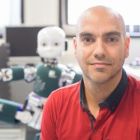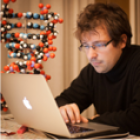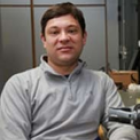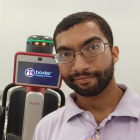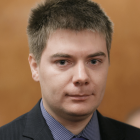Partners
| COUNTRY | PARTICIPANT ORGANISATION NAME | SHORT NAME | PRINCIPAL ROLES | MORE INFO |
|---|---|---|---|---|
Istituto Italiano di Tecnologia | IIT | Read more | ||
Istituto Nazionale Assicurazione contro gli Infortuni sul Lavoro | INAIL | Sergio Iavicoli | Read more | |
Institut national de recherche en informatique et en automatique | INRIA | Read more | ||
Institut Jožef Stefan | JSI | Read more | ||
Deutsches Zentrum für Luft- und Raumfahrt | DLR | Read more | ||
Xsens Technologies | XSENS | Read more | ||
IMK automotive GmbH (SME) | IMK | Read more | ||
Otto Bock HealthCare GmbH | OBGH | Graimann Bernhard | Read more | |
AnyBody Technology A/S (SME) | ABT | Michael Damsgaard | Read more |
People
L’Istituto Nazionale per l'Assicurazione contro gli Infortuni sul Lavoro e le malattie professionali

People
People
Xsens Technologies BV coordinates the ANDY activities for developing the ANDYSUIT a wearable force and motion tracking technology. Xsens brings into the consortium its experience in the development and commercialization of a wearable motion tracking system, the Xsens MVN Analyze (https://www.xsens.com/products/xsens-mvn-analyze/). This technology will be enhanced with additional wearable sensors (e.g. the Xsens Force Shoes) to make it suitable for simultaneous force and motion tracking.
Otto Bock will take care of the following activities:
- define the and contribute to the requirements of technologies, prototypes and evaluation scenarios of this project;
- play a main role in the Scenario 2 (support for manual labor tasks – upper extremity);
- adapt an already existing orthotic device for upper limb support in car assembly and develop it further to an actuated exoskeleton
- co-develop the interfaces to the sensor-system (ANDYSUIT);
- develop together with IIT the control mechanisms for the exoskeleton;
- OBGH will participate in the evaluation of the Scenario 2
AnyBody Technology A/S (SME) contributes to the project with its expertise in detailed musculoskeletal modeling, here-under modeling of man-machine interfaces. This plays a fundamental role in the dynamic modeling activities; not only to develop the models but also to find the best parameters and tuning approaches for the models for a given subject. Furthermore, ABT expertise will be exploited in the development of the ANDYDATASET dataset and in the development of the estimation technologies. Musculoskeletal models will be one of the tools to estimate properties that cannot be measured directly or accurately. Detailed musculoskeletal models will also be a tool to accurately estimate parameters that are being approximated during the real-time applications and as such, they can be used while verifying the accuracy of these applications.
A primary focus of ABT will be to bring as much of the detailed musculoskeletal model information into the real-time dynamics models as possible and to bring as much of efficiency as possible back into the detailed musculoskeletal models for independent usage, for instance as part of detailed post-processing ergonomic analysis of scenarios such as the three scenarios of the project. Enhanced ergonomic assessment models based on detailed musculoskeletal model data are also a focus area of ABT.









